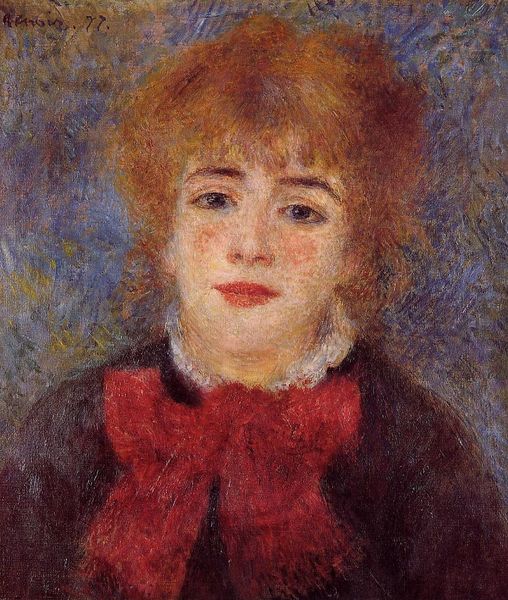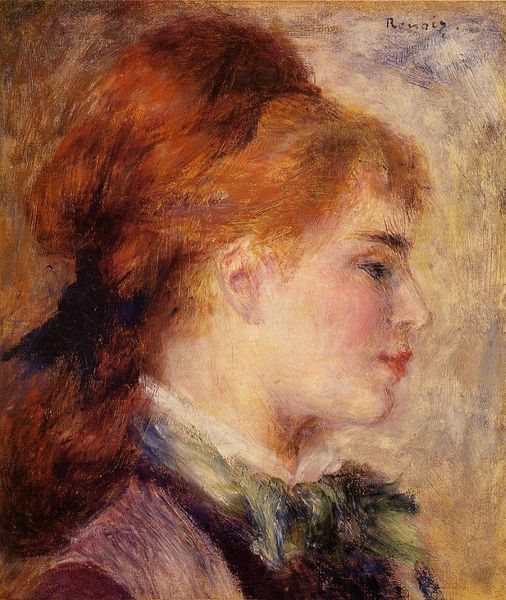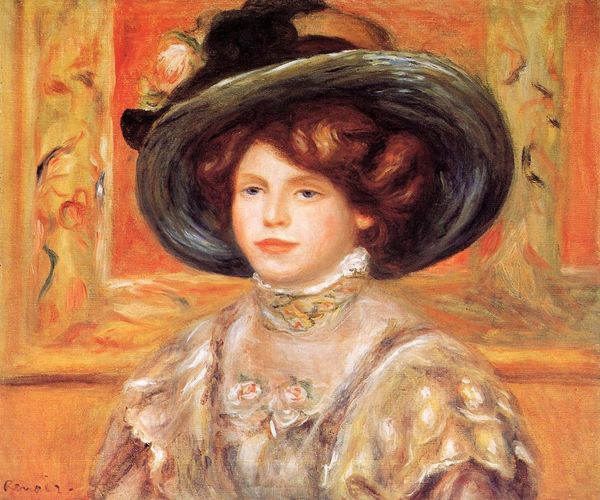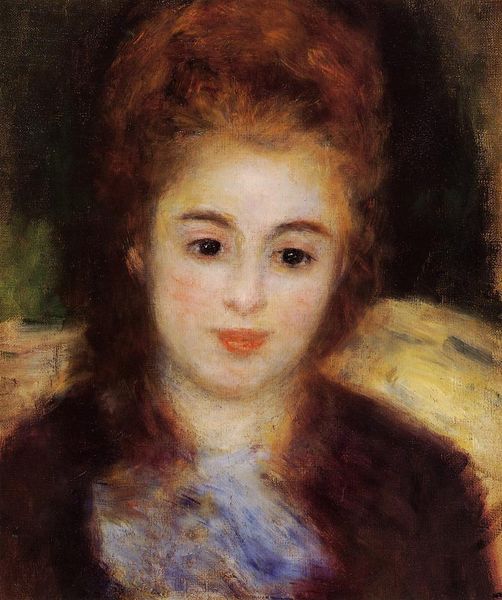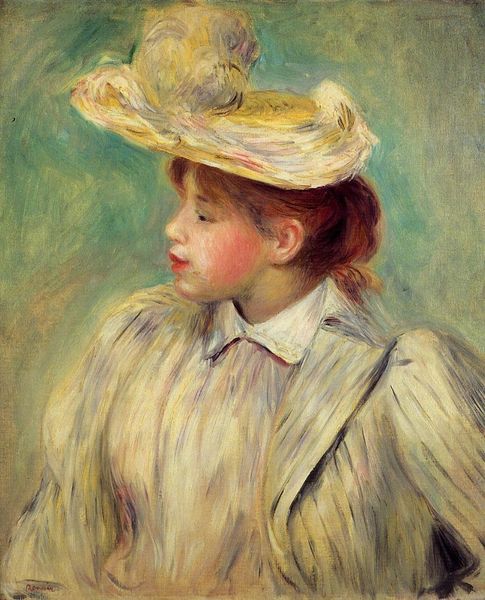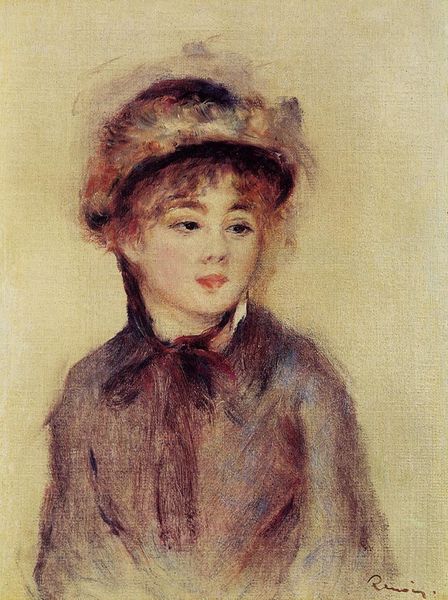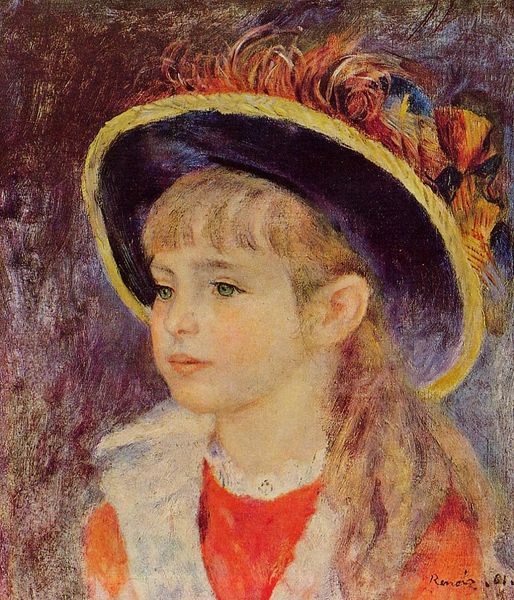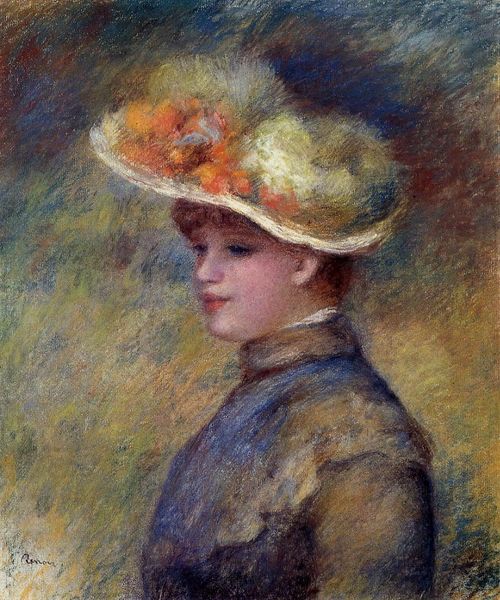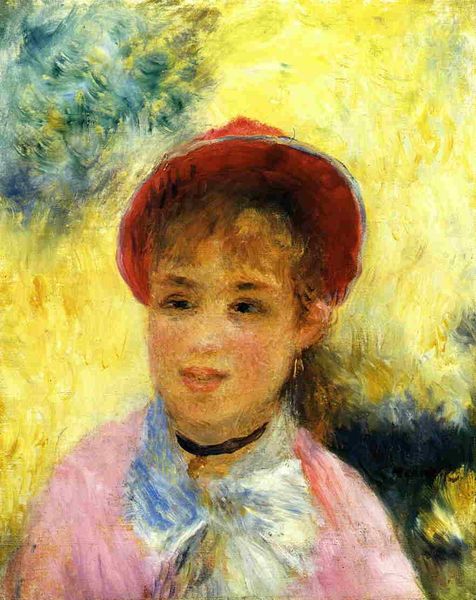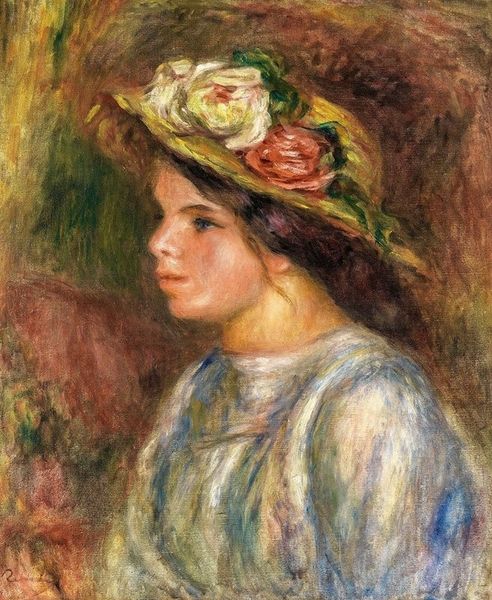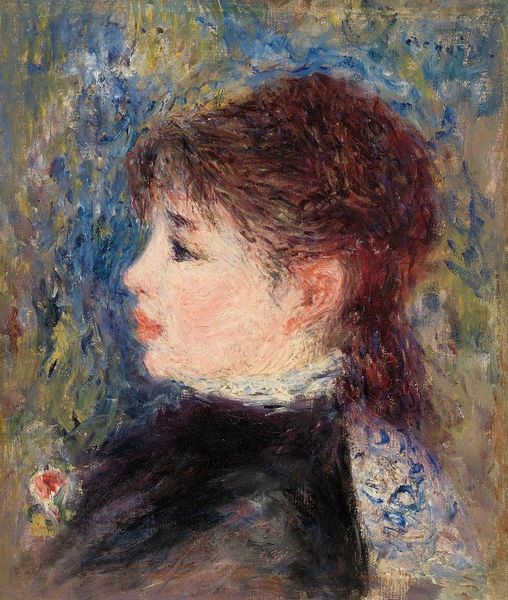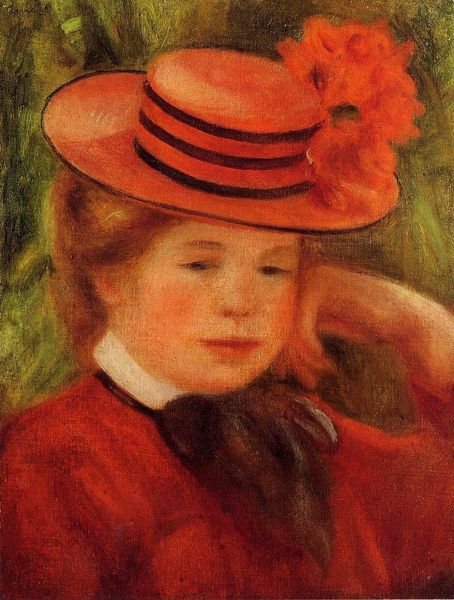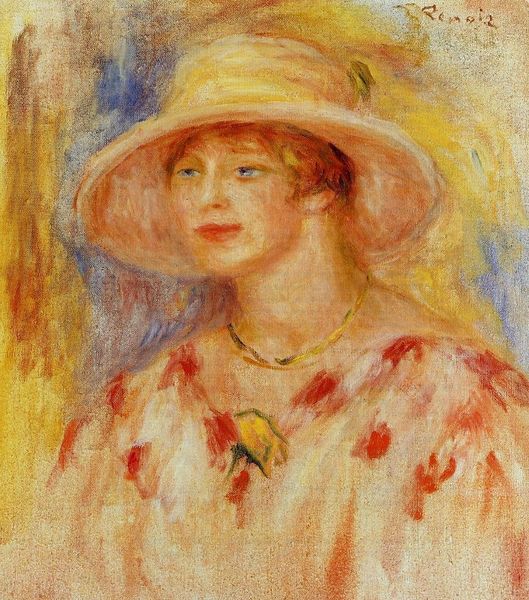
Copyright: Public domain
Editor: We’re looking at Renoir's "Woman Wearing a Hat" from 1889, an oil painting showcasing a woman with red hair and a fashionable hat. It strikes me as quite typical of Impressionist portraiture but I wonder about the implications of representing women from this era. What can you tell us about this piece? Curator: Well, let's unpack that a bit. The Impressionists often captured modern life, and women were certainly a key part of that. But were they depicted as active agents or merely decorative objects? Consider the title itself, "Woman Wearing a Hat." It's not a named individual, but a type, almost an objectification of the female figure. Do you think this focus on exterior appearance reinforces or challenges societal norms of the time? Editor: I suppose it’s a bit of both? The woman is present, but maybe her individuality is diminished? What do you think Renoir was trying to achieve? Curator: Exactly. Renoir and his contemporaries were negotiating these new roles for women in society. Were they simply celebrating beauty, or were they inadvertently reinforcing the limited scope afforded to women within the Parisian bourgeoisie? It raises questions about agency, visibility, and the power dynamics inherent in the act of representation itself. What do you take away from our discussion? Editor: It makes me see how even seemingly innocent paintings can reflect deeper cultural anxieties and power structures of their time, particularly concerning gender. Curator: Absolutely. It's crucial to examine the socio-political landscape alongside the aesthetic qualities of the work. By doing so, we can gain a richer, more nuanced understanding of both the artwork and its historical context.
Comments
No comments
Be the first to comment and join the conversation on the ultimate creative platform.
